#Heibon Punch
Photo
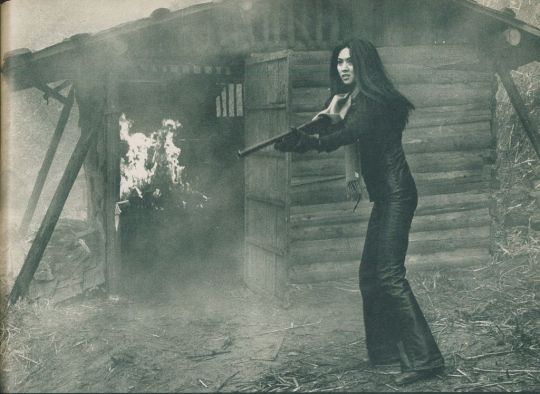
Meiko Kaji (梶芽衣子) in Jeans Blues: No Future (ジーンズブルース 明日なき無頼派), 1974, directed by Sadao Nakajima (中島貞夫).
Scanned from Heibon Punch (平凡パンチ), April 1st, 1974 .
#Meiko Kaji#梶芽衣子#Jeans Blues: No Future#Sadao Nakajima#Jeans Blues#Heibon Punch#ジーンズブルース 明日なき無頼派#中島貞夫#平凡パンチ#scanned by me#press photo#jeans gun#magazine
232 notes
·
View notes
Text

「横尾忠則イラスト廃業宣言」
平凡パンチ 1970年3月9日号
45 notes
·
View notes
Text
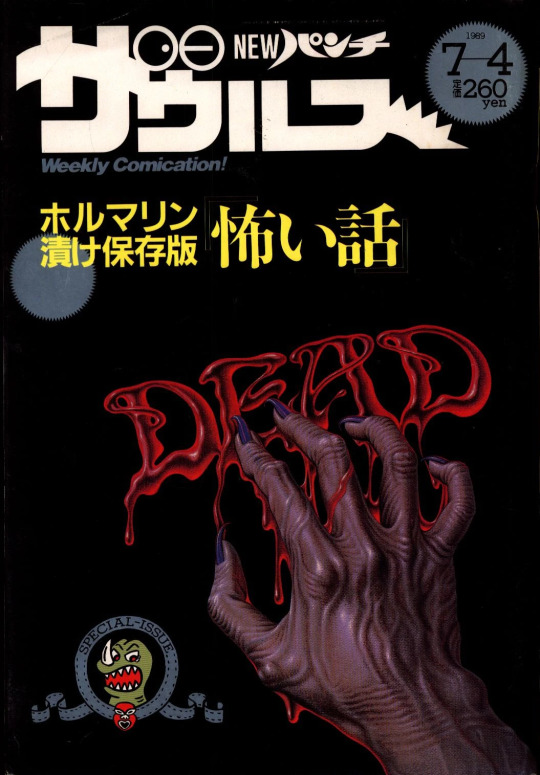
NEW Punch Zaurus (NEWパンチザウルス) / Magazine House (マガジンハウス) / 4th Jul 1989 issue
#vintage manga#seinen manga#80s manga#heibon punch#magazine house#issue month: july#NEWパンチザウルス#マガジンハウス
36 notes
·
View notes
Text
The signs as Heibon Punch magazine covers
Aries
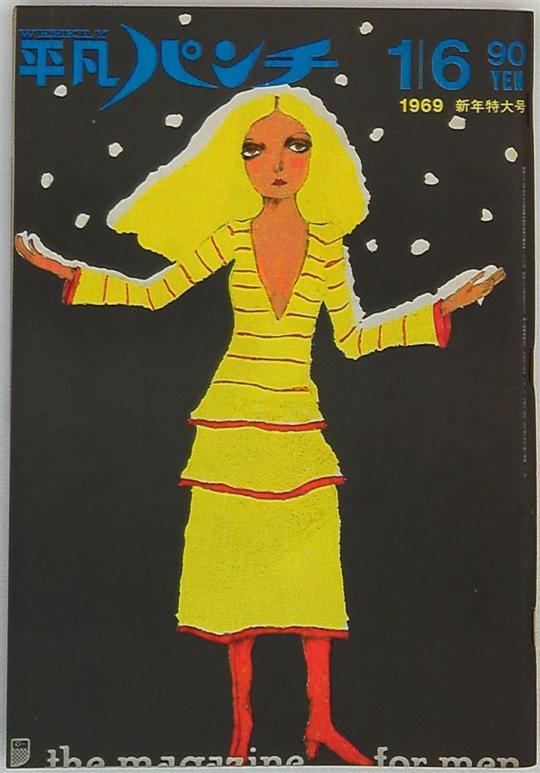
Taurus

Gemini

Cancer
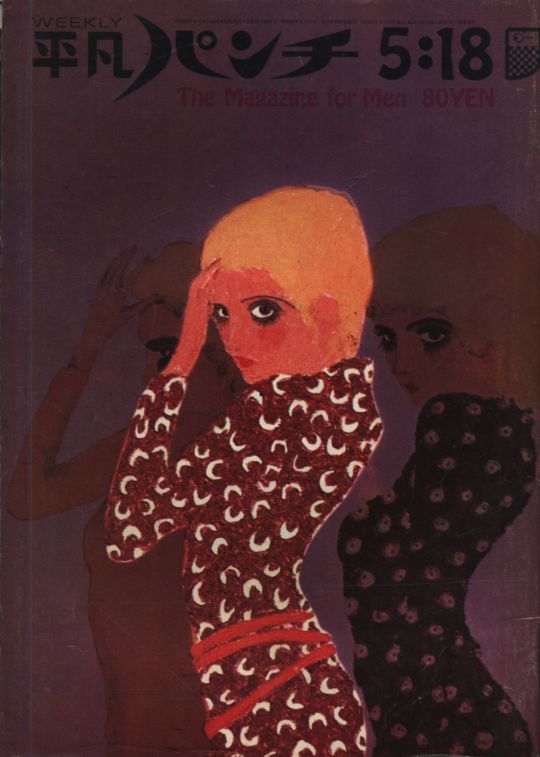
Leo
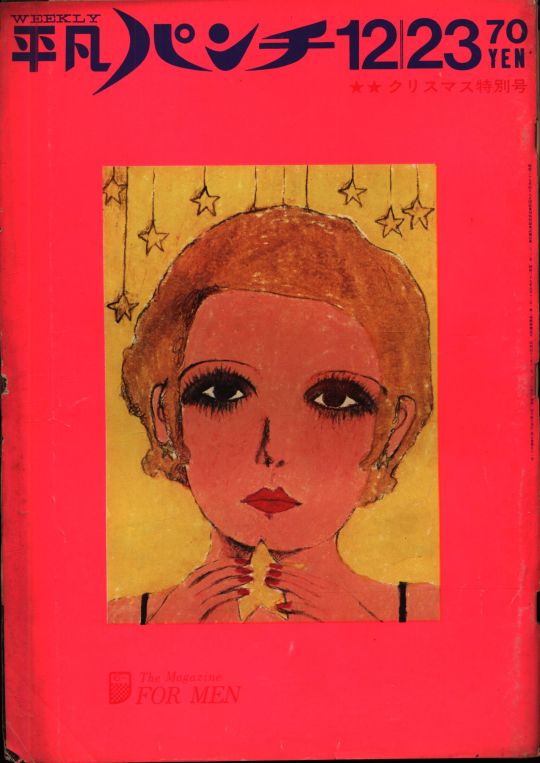
Virgo
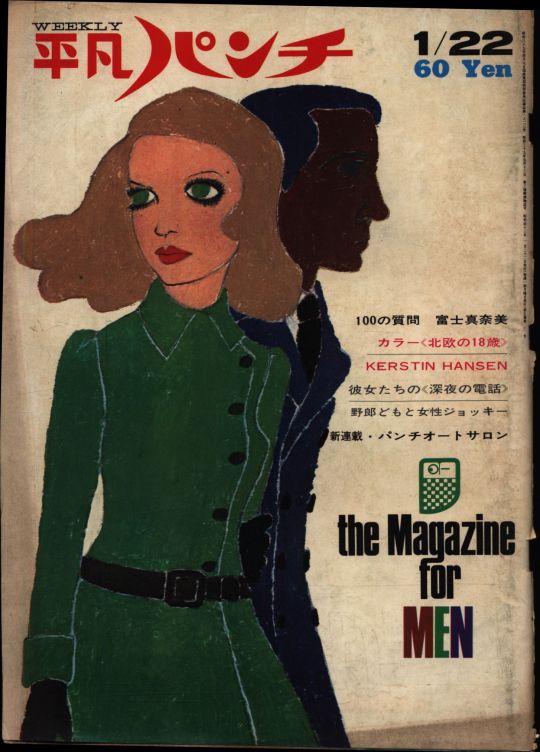
Libra
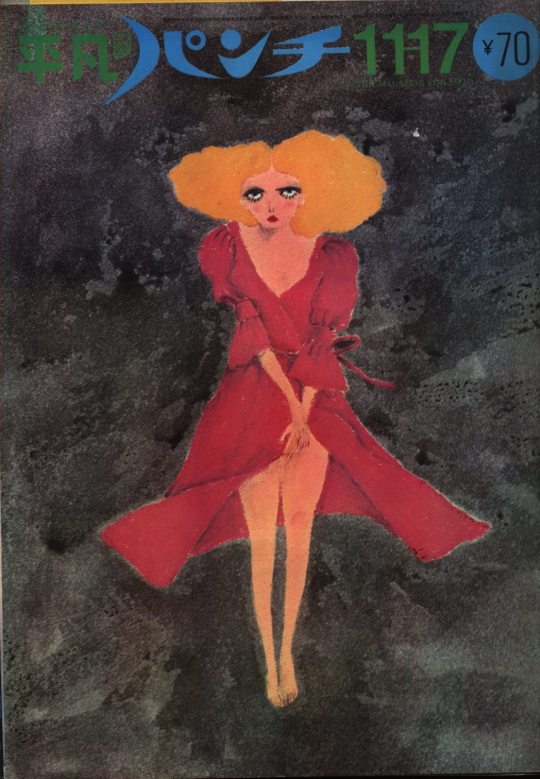
Scorpio
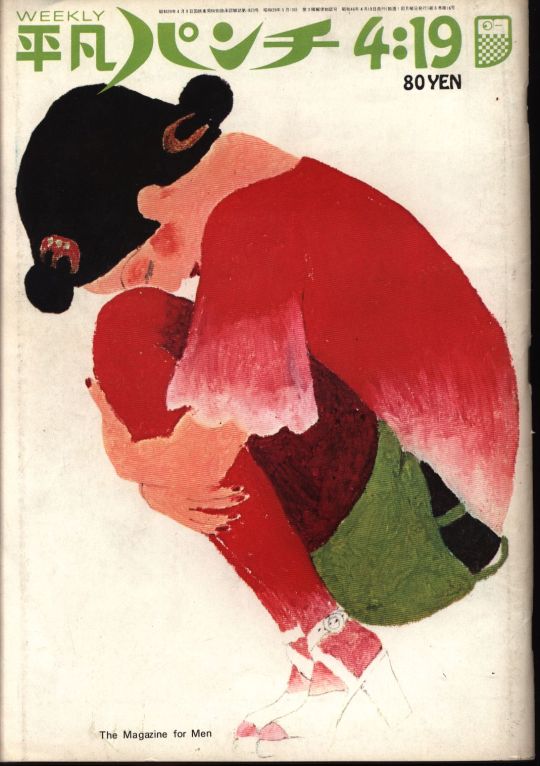
Sagittarius

Capricorn
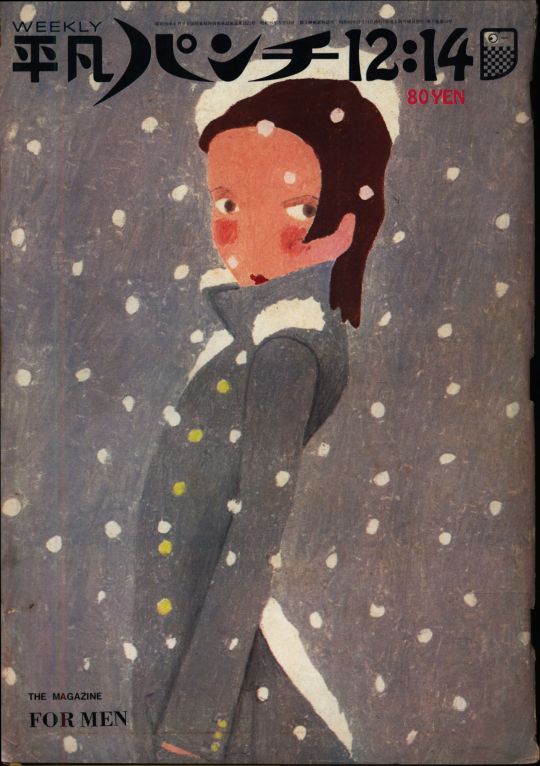
Aquarius
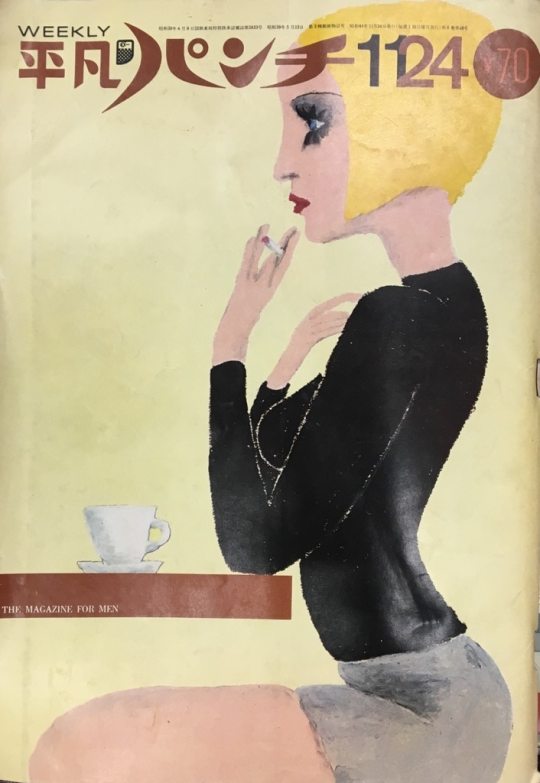
Pisces
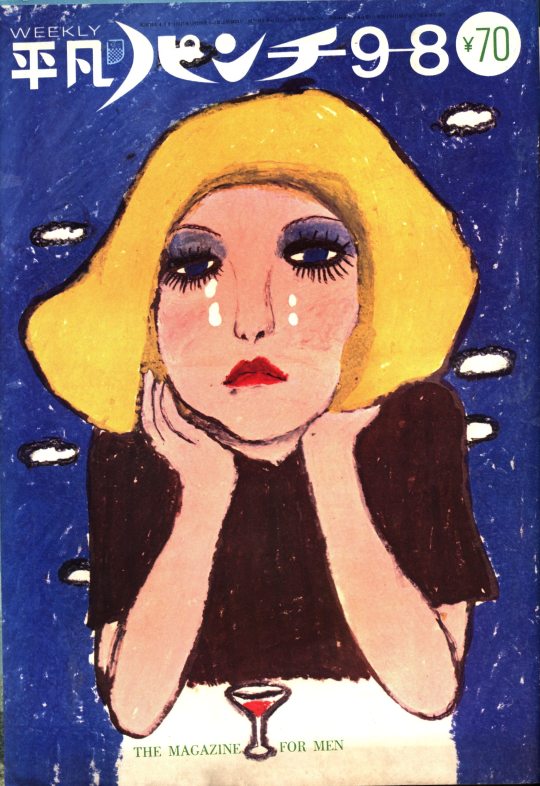
12 notes
·
View notes
Text


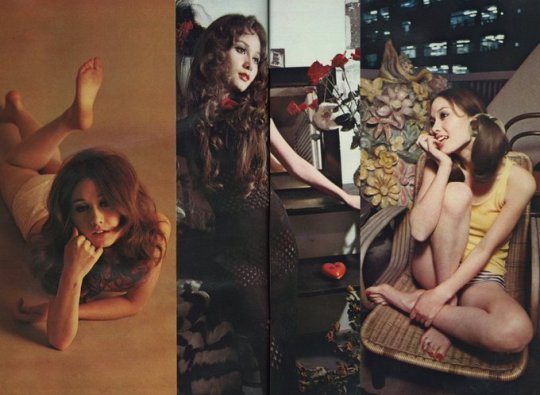

平凡パンチ 1970年12月7日号
リンダの変身
モデル:山本リンダ
撮影:和泉繁
5 notes
·
View notes
Text
70s Japan Trends Through the Music Charts (Part 2)
During the 1970s, the Japanese music industry was in the process of forming its identity. In addition to mirroring the musical preferences of the nation, the charts also served as a reflection of the prevailing societal trends and ambitions of that era. In this series, we chronicle the most significant musical trends of the decade.
70s Japan Trend Through the Music Charts (Part 1)
Trend #4: The Impact of Discover Japan
In 1970, Osaka hosted the World Expo, marking a significant milestone for post-war Japan following the 1964 Tokyo Olympics. To accommodate the influx of visitors, the government expanded the rail network, enabling over 60 million people—half of the nation's population—to journey to the World's Fair. However, as the Expo drew to a close after six months, concerns arose about the railways becoming obsolete. So, with the help of the ad agency Dentsu, they devised a campaign to stimulate domestic tourism by rail. The result was "DISCOVER JAPAN," one of the most iconic campaigns of the decade (which, curiously, was partially inspired by Ivy Fashion brand VAN).
"DISCOVER JAPAN" profoundly impacted Japanese society by popularizing solo travel and igniting domestic tourism, particularly among young women who ventured out on their own. This trend was further fueled by the launch of the first female fashion magazines, AnAn and Non-no, both of which extensively covered visits to charming cities across the country. Cities known as "Little Kyoto," which retained their Edo Period architecture and charm, were particularly attractive to these travelers.
Influenced by fashion magazines, these trend-conscious women journeyed to small cities throughout Japan, earning them the moniker "AnNon" (a fusion of AnAn and Non-no). Their impact during the 1970s was significant enough to be mentioned in a song by Sada Masashi, one of the decade's prominent folk singers.

"DISCOVER JAPAN," the print and TV campaign devised by Dentsu, is one of Japan's most successful and era-defining marketing campaigns.
Sada Masashi rose to fame in the early 1970s as part of the folk duo Grape before launching a successful solo career. In 1977, his song "Ehagakizaka," which paid tribute to his hometown of Nagasaki, mentioned identically dressed stylish young girls in denim, clutching AnAn and Non-no magazines while photographing their surroundings. This song vividly captured the aspirational girl culture of the 1970s, characterized by "healing" domestic trips in pursuit of tranquility and small pleasures, hippie and boho-inspired fashion, and folk music as the soundtrack.
Masashi Sada's song and the AnNon-zoku tribe aside, "DISCOVER JAPAN," had an immense impact on different layers of Japanese society. And that included the music charts. In 1971, the two best-selling singles, "Watashi no joka-machi" by Rumiko Koyanagi and "Shiretoko ryojou" by Tokiko Kato, surpassed 1 million copies sold. Both perfectly embodied the campaign's spirit in highlighting the hidden beauties of Japan.
"Watashi no jokamachi," or "My Castle Town," marked Koyanagi's explosive debut, selling over 1.3 million copies. This enka-infused kayokyoku ballad paid homage to cities with Edo-like architecture, often centered around a feudal lord's castle, evoking a peaceful, melancholic atmosphere in its lyrics. Rumiko continued to sing about regional Japan's charms the following year with another hit, "Seto no Hanayome" (The Bride of Seto). Meanwhile, the folk-inspired "Shiretoko ryoujou" (Shiretoko Journey) celebrated the unique beauty and culture of the Shiretoko peninsula on Hokkaido Island.
In the same year, other artists also succeeded by spotlighting provincial Japan. Enka superstar Shinichi Mori delved into this theme with "Boukyou" (Nostalgia). At the same time, Yuuko Nagisa found success with a Japanese rendition of The Ventures' "Kyoto Doll," titled "Kyoto no Koi" (Love in Kyoto). She would go on to have another top-selling single with her version of another Ventures song, "Reflection in Palace Lake," transformed into "Kyoto Bojo" (Kyoto Longing).
Trend #5: The Legend of Momoe Yamaguchi
"Aidoru" or "idols" are cute girl/boy-next-door types who sing, dance, act, host TV shows, and star in countless commercials. They stand as one of the cornerstones of the thriving multi-billion yen Japanese entertainment industry. The 70s was an essential era for consolidating this type of star. And one idol, in particular, shone the brightest: Momoe Yamaguchi.
Momoe is a legendary star and an example of an "aidoru" who excelled at everything, exuding sophistication, talent, and sex appeal. The fact she retired from public life at the height of her fame cemented her mythical status.

Momoe Yamaguchi in her prime, the idol industry's gold standard.
In 1972, at the tender age of 13, Yamaguchi auditioned for the talent search TV show "Star Tanjou!" (A Star is Born). Her crisp singing voice and mature beauty immediately captured the industry's attention. Hori Production, the entertainment agency, and Sony CBS label swiftly recognized her potential and signed her. In May 1973, five months after her televised audition, she made her official debut with the single "Toshigoro" (Adolescence). Although Sony had a history of immediate success with newcomers, Momoe's first single received a tepid response, so her label decided to court a bit of controversy for her sophomore outing. "Aoi kajitsu" (Ripe Fruit) had the innocent-looking 14-year-old girl singing, "you can do whatever you want to me, even if they say I'm a bad girl." The racy lyrics worked, and the single was a success.
A few months later, Yamaguchi's backers repeated this formula with "Hito natsu no keiken" (One Summer Experience). The song began with a suggestive promise: "I'll give you the most precious thing a girl has." The lyrics were laden with double entendres, describing a "sweet trap of temptation" that can only be experienced once. She sang, "if the person I love is pleased, then I'm happy. I don't mind if you break it," which could be understood as a reference to a girl's hert or hymen.
The single was an explosive hit, propelling 15-year-old Yamaguchi into the A-list. For the remainder of her career, she was frequently asked about the "most precious thing a girl has," to which she'd always offer a stern-looking reply: "her devotion."
The young, mature-looking girl singing thinly veiled songs about sexual awakening with a dark, serious-looking image set her apart from the prevalent happy-go-lucky idol aesthetic. However, it wasn't merely reliance on gimmicks that transformed her into a legend. In 1976, after firmly establishing herself as a star, she parted ways with her frequent collaborators, lyricist Kazuya Senke and composer Shunichi Tokura. Beginning with the single "Yokosuka Story," she partnered with the husband-and-wife duo Yoko Aki and Ryudo Uzaki.
Ryudo Uzaki, the frontman of the popular enka rock band DOWNTOWN BOOGIE WOOGIE BAND, infused her kayokyoku tunes with a rock edge. Through her lyrics, Yoko Aki redefined Momoe's image as a confident, clear-eyed girl transitioning into womanhood. Initially, Sony opposed Momoe's desire to collaborate with Aki and Uzaki, but the partnership ultimately helped her reach her commercial peak.
"Yokosuka Story" was Momoe's first single to reach the number 1 spot on the weekly charts. The Aki-Uzaki duo penned several other hits for her, including "Playback Part 2" and "Sayonara no mukougawa" (The Other Side of Goodbye), and opened doors for her to collaborate with other luminaries of Japanese music. Two of her most memorable hits, "Cosmos" and "Ii hi tabidaichi" (Beautiful Day Departure), both released in 1978, were penned by folk superstars Masashi Sada and Shinji Tanimura of Arisu, respectively. The latter became the theme song for the iconic DISCOVER JAPAN TV commercials.
Speaking of commercials, idols worth their salt can't limit themselves to music. Momoe earned millions being the face for Toyota cars, Fujifilm photographic films, Casio watches, and Glico confectionary products, among others. She also starred in highly-rated TV dramas and ventured into the world of film.
Starting in 1974, she appeared in two romantic films per year, always paired with Tomokaza Miura as her co-star. While Momoe pursued various ventures, Miura's acting career primarily revolved around being her on-screen romantic partner. Their undeniable chemistry and the box-office success of their films led to them being known as the "golden combination."
In a concert at the end of 1979, Momoe stunned her audience by revealing that her on-screen partner, Miura, was her real-life boyfriend. In a subsequent press conference in March of the following year, she confirmed her intention to marry him and retire officially. In September, she released her autobiography, which sold over 1 million copies in a month. In October, she bid farewell through a series of TV specials and a concert at Nippon Budokan. Her farewell concert reportedly earned Hori Productions over 20 million dollars, according to figures provided by the agency to Billboard magazine at the time. Momoe's success allowed HoriPro to become one of the best-established entertainment agencies in Japan, a position it still holds today. Her final performance took place at HoriPro's 20th-anniversary event, where she sang "Ii hi tabidaichi." In November, she married Miura and disappeared from the media.
The Japanese public obsession with her never waned. Paparazzi tried to capture her at her son's kindergarten graduation ceremony and doing classes at a local driving school. Many speculated she'd eventually come out of retirement. She never did, which only helped feed the obsession around her.
During the 1970s, Yamaguchi enjoyed immense success, but she was one of many popular female idols. The narrative created by her retirement elevated her to the status of a larger-than-life legend. She became the gifted, beautiful young woman who succeeded as a singer, a TV actress, and a movie star before choosing the ultimate happy ending: marriage. By choosing love, Momoe Yamaguchi, the legendary idol, transformed into an ordinary woman—a real-life fairy tale that resonated deeply with Japanese society.
Her decision was driven by profound motivations. Momoe revealed in her autobiography that she was raised by a single mother, the product of an extramarital affair. Her challenging upbringing and her father's late appearance to capitalize on her fame instilled a deep desire for a traditional, happy family life. She also grew weary of the relentless demands of stardom and the repetitiveness of performing the same songs. Thus, she made a heartfelt choice to relinquish fame and public life to give her husband the most important thing a girl has: her devotion.
Trend #6: Idols' Rise
The term "idol" in the Japanese entertainment industry finds its origins in the French film "Cherchez l'idole" (1963), which enjoyed immense popularity in Japan. Initially, "Aidoru" was used to describe the film's star, Sylvie Vartan, before it evolved into a general term to describe youthful-looking triple-threat domestic stars.
Before the coining of the term, "idol-like" stars had already existed. In the 1930s, Machiko Ashita attracted crowds to the Moulin Rouge Shinjuku and served as the face of several brands. In the 1950s, rockabilly stars enjoyed massive popularity among the youth, and the 1960s saw the rise of manufactured "group sound" bands and the female duo The Peanuts, comprised of twin sisters. Legendary stars such as Hibari Misora, Sayuri Yoshinaga, Teruhiko Saigo, Yukio Hashi, and Kazuo Funaki thrived as both movie stars and successful singers.
However, the 70s marked the consolidation of the "idol" aesthetic and career path, paving the way for the "golden era of idols" in the next decade. Essential for it to happen was the widespread adoption of the medium where idols shine the brightest: television.
TV allowed entertainment agencies to aggressively push their young, fresh-faced talents in front of a broad audience. They populated music and variety shows, commercials, and dramas. They were immaculate, life-sized stars ready to play the part of the nation's sweethearts.
Although history has crowned Momoe Yamaguchi as the ultimate 70s idol, she was just one among many during most of that decade. A closer examination of the numbers reveals that Mari Amachi, a female idol, had the most significant short-term impact during that time.
Amachi was first introduced on the popular TBS TV drama "Jikan desu yo" (It's Time) in 1971, playing "Tonari no Mari-chan" (Next Door Mari-chan). She played the minor role of a cute girl who lived close to the show's primary setting, a family-run public bathhouse, and often appeared by her window, playing guitar and singing. By October, with the backing of the biggest entertainment agency of the era, Watanabe Production, and Sony CBS, 19-year-old Mari Amachi officially debuted with the single "Mizuiro no Koi" (Light Blue Love). It was a hit—the first of many. Mari would be 1972's best-selling act, achieving high sales with four albums and five singles.
Mari's image, characterized by an innocent aura, a happy-go-lucky personality, and frilly dresses as stage outfits, became the prototype for female idols. Her short hair and chiseled smile earned her the nickname "Sony's Snow White," evoking the image of a fairytale princess. Unsurprisingly, she was particularly popular with children, leading Watanabe Pro to license her likeness for various goods, including the coveted "Do-Re-Mi Mari-chan" Bridgestone Cycle bicycle, highly sought after by young girls in the early 70s.
Despite her rapid rise to fame, Mari's time at the top was short-lived. By 1974, another Watanabe Pro idol, Agnes Chan, was already surpassing her in sales. In 1977, Mari's health deteriorated, and she took a lengthy hiatus, officially attributed to thyroid issues but later revealed to be depression triggered by her waning popularity. In 1979, she attempted a comeback, even bagging an endorsement deal for an ultrasonic facial device, one of the year's hit items for women. But her time had passed and she didn't find much success. Eventually, Mari's career took unconventional turns, including involvement in a softcore porn movie, the release of nude photobooks, and a transition to becoming a "fat" talento (TV personality), followed by a weight-loss book.
In 2015, in her last public interview, she revealed that, at 63, she was living in a retirement home in the Tokyo suburbs. Her fan club covered her expenses, while her daughter provided a modest weekly allowance. This marked a stark contrast to her glamorous peak years and serves as a reminder of the challenges idols face in the Japanese entertainment industry, particularly women, and how easily discardable idols can be. It also shows how wise Momoe Yamaguchi was, bowing out gracefully at the right time.
However, Momoe Yamaguchi and Mari Amachi represent two extremes within the realm of idols. While Mari achieved record profits for two years before facing decline and eventual obscurity, Momoe maintained relevance for nearly a decade before choosing to marry her on-screen partner, retire, and become a living legend. Most other 70s idols did not experience such remarkable destinies.
In 1971, two other young idols, Rumiko Koyanagi and Saori Minami, made their debut alongside Mari Amachi. The trio was collectively known as the "shin sannin musume," or the "three new girls." Their joint concert at the Budokan on Christmas of 1972 solidified their shared nickname.

The Shin San-nin Musume. Clockwise: Rumiko Koyanagi, Mari Amachi, and Saori Minami.
Rumiko Koyanagi had her skills honed at the Takarazuka Music School. Takarazuka is a very traditional, all-female theater group, and their training academy is known to be highly rigorous and selective. Koyanagi graduated top of her class but wanted something other than a musical theater career. Instead, her goal was to debut as a solo singer. So she left the Takarazuka Revue and signed with Watanabe Pro and Warner Pioneer label to fulfill her dream. Her first song, "Watashi no joka-machi" (My Castle Town), buoyed by the "Discover Japan" boom, surpassed 1 million copies sold, becoming the best-selling single of 1971.
Rumiko's repertoire predominantly featured enka-influenced kayokyoku. Her classical sound may not have been as appealing to the youth as some of her peers' slightly more modern tunes, but it ensured her stable sales throughout the decade. In her sixties, Rumiko has reinvented herself as a passionate soccer fan and a glamorous senior lady, sharing lifestyle tips and her love for Chanel and Lionel Messi on Instagram. She also conducts dinner shows, a lucrative type of intimate concert usually held at luxury hotels, where fans pay hefty prices to enjoy a multi-course dinner while listening to nostalgic hits.
The third "shin sanin musume" is Saori Minami. Minami didn't have a million-selling debut like Rumiko, nor did she become an instant sales behemoth like Mari. That didn't mean she was less impactful. Quite the opposite. Hailing from Okinawa, still under US occupation during her debut, Saori impressed Japan with her exotic beauty. In 1971 and 1972, she outsold every other female idol in bromide sales. Bromide is the local terminology for photographic portraits of celebrities, and historically, its sales are the best way to gauge how popular an idol is.
Her first single, "17-sai" (17 years old), became a classic and enjoyed enduring popularity, with several artists covering it over the decades. After retiring in 1978 upon her marriage to legendary photographer Kishin Shinoyama, Saori made a comeback in 1991 but has made only sporadic public appearances since then.
Two years after the emergence of the "shin sannin musume," a new trio of newcomers known as the "Hana no Chuusan Trio" or the "Chuusan's Flower Trio" (a reference to the fact all of them were in Chuusan, the third year of middle school) came into the spotlight. Masako Mori, Junko Sakurada, and Momoe Yamaguchi were all revealed in the talent search TV show "Star Tanjou" (A Star is Born). In 1975, by the time they were in their second year of high school (kou 2), they co-starred in the successful film "Hana no Kou 2 Trio."
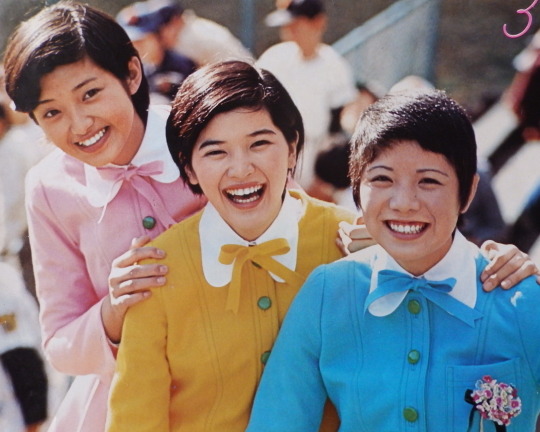
The Hana no Chuushan Trio: Momoe Yamaguchi, Junko Sakurada and Masako Mori.
At 13 years old, Masako Mori secured her place as the inaugural "Star Tanjo" grand champion in 1971. The following year, she debuted under Hori Production and swiftly soared to success. Mori's music was deeply influenced by enka, and by the close of the decade, she had solidified her status as a fully-fledged enka star. In 1986, she tied the knot with enka superstar Shinichi Mori, leading her to retire from the entertainment scene. However, in 2005, following her divorce, the former idol made a comeback, embarking on tours and participating in TV dramas for a few years before ultimately deciding to bid farewell to her career once more on her 60th birthday in 2019. Notably, she shares three children with Shinichi Mori, including TAKA, the lead vocalist of the popular rock band ONE OK ROCK.
Junko Sakurada clinched victory at "Star Tanjo" in 1972 at 14. Subsequently, she signed with Sun Music agency and Victor Music, marking her official debut in February 1973 with the release of "Tenshi mo yumemiru" (Angels Also Have Dreams). Given their similar age, niche, and close debut dates, the industry and some fans pitted her against Momoe Yamaguchi despite their behind-the-scenes friendship. Both idols enjoyed substantial popularity, with Yamaguchi usually holding an edge in sales. The exception was in 1975 when Junpei, as fans affectionately knew her, dominated as the best-selling female idol in music and bromide sales.
In addition to her music career, Junko excelled as an actress. In 1983, she opted to conclude her singing career to dedicate herself solely to acting. A decade later, in 1993, the former idol shocked Japan by announcing her participation in a mass wedding ceremony organized by the controversial South Korean Unification Church at the Olympic Stadium in Seoul. Her husband had been chosen for her by the church.
Her association with the cult brought her career to an abrupt halt. With her image becoming closely linked to the church, TV networks and advertisers distanced themselves from her. Consequently, Junko relocated from Tokyo, devoting herself entirely to her faith and family. Since then, she has made a few comebacks. In 2006, she published a highly-publicized essay book, and in 2013, she celebrated the 40th anniversary of her debut with a special concert. In 2017 and 2018, she returned to the stage, coinciding with her musical comeback and the release of a new album, "My Ideology."
After this project, Junko has remained out of the spotlight, with an official return unlikely unless she completely renounces her ties with the United Church. The cult's controversial image became even more repellent following the murder of former Prime Minister Shinzo Abe in July, committed by a young man who attributed his family's financial and psychological turmoil to the church. Consequently, the cult's unethical financial practices and ties to the ruling Liberal Democratic Party have become widely discussed topics in the country. For Junko Sakurada, her affiliation with the cult has overshadowed her otherwise successful decades-long career.
Completing the trio alongside Junko and Masako was Momoe Yamaguchi. Although Yamaguchi's career has eclipsed that of almost every other idol of the 1970s, she initially experienced the least success among the three young girls. Unlike her peers, both of whom had claimed grand champion titles at "Star Tanjou!," Momoe secured second place at her final showcase. Moreover, her debut single was the poorest-selling among the trio. However, she would ultimately emerge as the definitive idol, and her retirement would serve as the perfect conclusion to an epoch-making career.
While Momoe, Junko, Masako, Mari, Agnes, Rumiko, and Saori, among others, collectively set an impressive precedent for future female idols, male idols also played a significant role in the era. In terms of profitability, male idols reigned supreme, thanks to the unwavering loyalty of their female fanbase. Johnny Kitagawa, the late founder of Johnny's Jimusho, would eventually become the most influential figure in the entertainment industry by monopolizing this niche for decades with his boybands.
However, during the 1970s, Kitagawa was just one among many. Although his agency achieved considerable success with the boyband Four Leaves, it was soloist Hiromi Go who briefly held the nation under his sway between 1973 and 1974. Unfortunately for Kitagawa, this period of dominance proved fleeting, as Go departed for another agency in 1976, signaling that Johnny Kitagawa still had much to accomplish to solidify his authority.
With Johnny's domination still on the horizon, Hideki Saijo emerged as the most influential male idol of the 1970s. Saijo enjoyed success with several hit singles, including the ballad "Chigireta Ai," released in 1973, and 1979's "Young Man," a cover of Village People's "Y.M.C.A." Demonstrating the power of devoted fangirls, Saijo became the first domestic solo artist to perform a concert at Nippon Budokan. His popularity quickly transcended the Budokan, propelling him to the status of a stadium headliner and solidifying his position as the decade's top concert ticket seller.
The loyalty of fangirls meant that male idols consistently outperformed any act in ticket sales. In the 1960s, The Tigers, considered one of the pioneers of the "group sound" movement and regarded by many as Japan's first idol group, became the first domestic act to hold a stadium concert. By the following decade, the "group sound" era had ended, but some former band members successfully transitioned into solo careers.
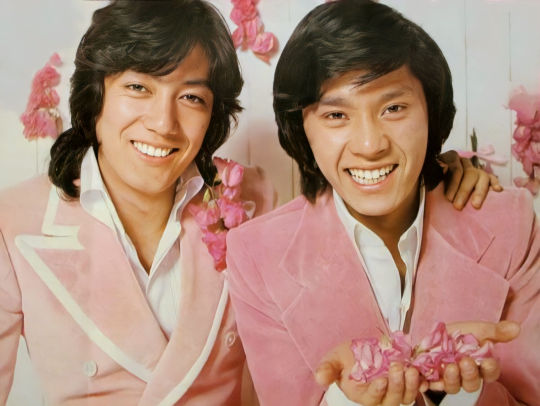
Kenji Sawada and Hideki Saijo, the two stadium-selling male idol superstars from the 80s.
Kenji Sawada, the former lead vocalist of The Tigers, remained a constant presence on the charts throughout the 1970s. Under the guidance of the influential Watanabe Pro agency, Sawada succeeded as a singer and actor. He brought a rockstar aura to his performances, incorporating impactful and extravagant visual elements and pioneering the use of makeup, drawing inspiration from David Bowie and glam rockers. In doing so, Sawada laid the groundwork for visual kei, a movement that would revolutionize Japanese rock in the late 1980s and early 1990s. Nicknamed "Julie" since his early days in the 1960s due to his admiration for Julie Andrews, Sawada continues to thrive as a prominent music figure in Japan, one of the few stars from that era still capable of selling out stadiums.
While girls' adoration often paves the way for male idols to enjoy lengthy careers, there are exceptions to this rule. In 1974, Finger 5 became one of the best-selling idol groups in the country. Comprising five young brothers from Okinawa, they were marketed as Japan's response to the Jackson 5 and consistently churned out hit singles. However, just two years later, their popularity took a nosedive. Several factors contributed to this decline, notably their heavy reliance on the two youngest members, aged only 10 and 12. These youngsters not only grappled with exhaustion from relentless work schedules but also faced the challenges of puberty, causing their voices to change and preventing them from hitting the right notes in their songs. Consequently, Finger 5 lost its appeal.
Finger 5's brief career underscores a crucial aspect of the idol industry: the importance of youthfulness. In Japan's gender-biased society, some male idols from the 1970s were granted the opportunity to age gracefully, evidenced by a few who maintained success well into their 60s and 70s. In contrast, female idols invariably confronted the pressures and inevitable decline associated with aging.
This brings us back to the quintessential idol of that era, Momoe Yamaguchi. By choosing to retire and steadfastly resisting any temptation to reenter the public eye, Yamaguchi effectively became frozen in time at 21 years old, her age at the moment she bid farewell to both showbiz and the public. This solidified her status as a legendary and unattainable icon—an idol who never aged.
70s Japan Trends Through the Music Charts (Part 3)
#enka#kayokyoku#momoe yamaguchi#70s japan#1970s#japanese music#jpop#discover japan#heibon punch#kenji sawada#hideki seiji#junko sakurada#70s idols#finger 5#mari tenchi#rumiko koyanagi#saori minami#four leaves#hiromi go
17 notes
·
View notes
Photo
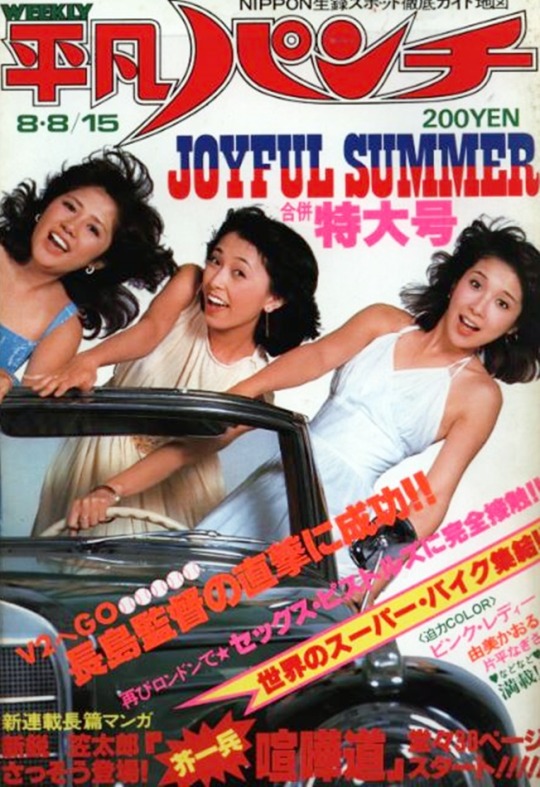
The Candies
16 notes
·
View notes
Text
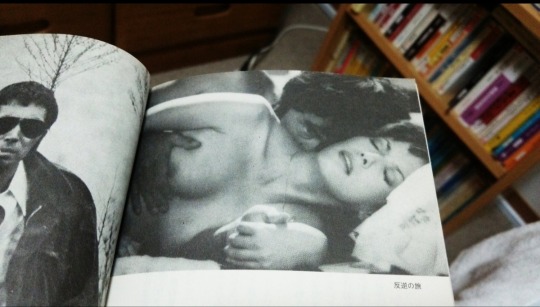
Japanese actor Yoshio Harada with Japanese actress Reiko Asoo from Rebellious journey 1976 . Японский актёр Ёсио Харада с Японской Актрисой Рейко Асо из Мятежное путешествие 1976.日本の俳優原田芳雄と日本の女優麻生れい子 「反逆の旅」 1976年。
#麻生れい子#原田芳雄#yoshio harada#田中邦衛#kunie tanaka#ёсио харада#高橋洋子#yoko takahashi#Reiko Asoo#反逆の旅#Hangyaku no tabi#Rebellious Journey#昭和#昭和レトロ#1976#xx century#20 век#20世紀少年#平凡パンチ#heibon punch
1 note
·
View note
Text

Yoshihiro Tatsuki - Mari Atsumi (Heibon Punch 1970)
#yoshihiro tatsuki#mari atsumi#heibon punch magazine#photography#vintage photography#vintage#retro#aesthetic#beauty#cheesecake#seventies#70s#70s model#1970s#pin up#pinup#pinup model#actress#editorial
1K notes
·
View notes
Photo



Ayumu Ohashi
Heibon Punch Extra Edition Ohashi Ayumu Cover Collection 1964-1971
155 notes
·
View notes
Photo
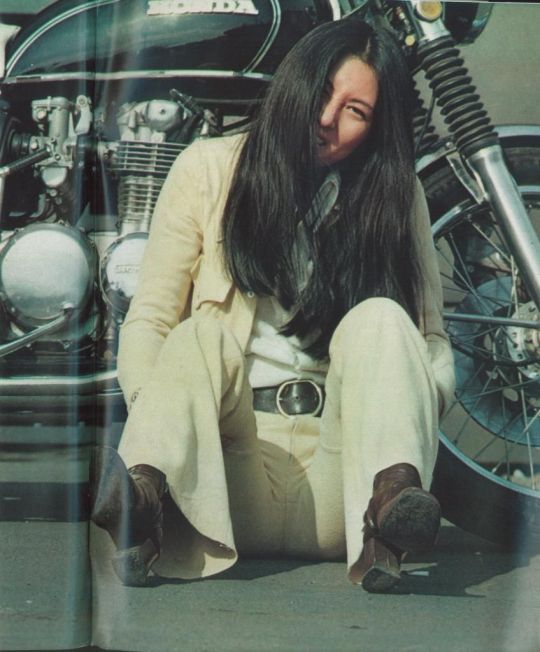
Meiko Kaji (梶芽衣子)
Scanned from Heibon Punch (平凡パンチ), December 4th, 1972.
91 notes
·
View notes
Photo
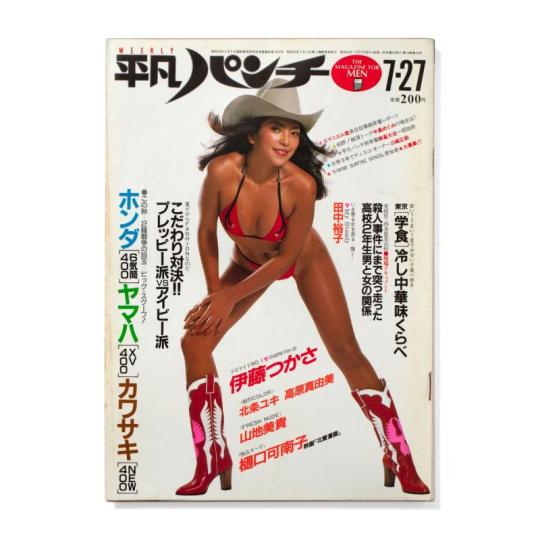
Heibon Punch: No. 871, July 1981
17 notes
·
View notes
Text
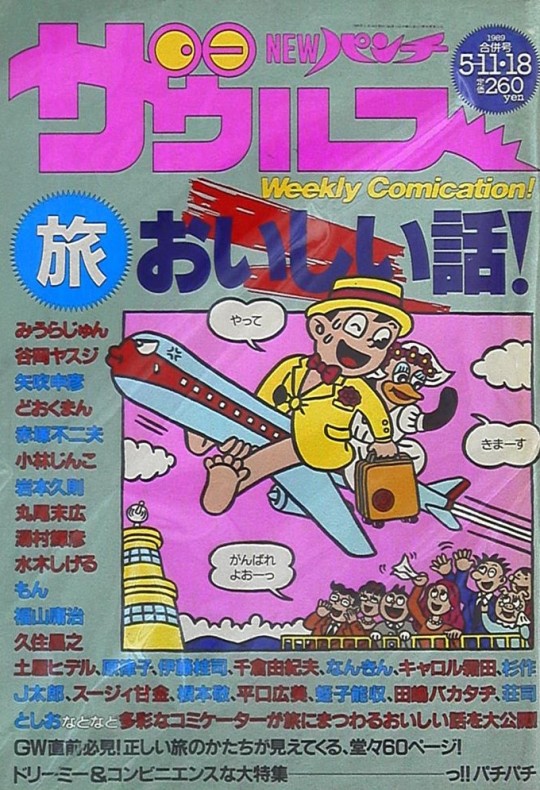
NEW Punch Zaurus (NEWパンチザウルス) / Magazine House (マガジンハウス) / 11th May 1989 issue
#vintage manga#seinen manga#alternative manga#80s manga#magazine house#heibon punch#NEWパンチザウルス#マガジンハウス#issue month: may
19 notes
·
View notes
Text
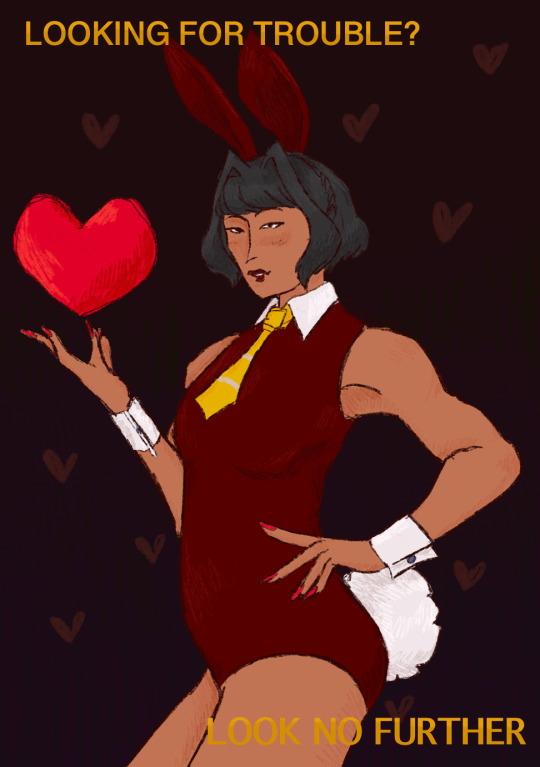
Valentine’s Day means I get to be cheeky and post ONE pinup
Refs and inspo below the cut (one of them is genuine riské so you’ve been warned


Both ripped from Pinterest but from what I can find
Bunny pic is from the magazine Heibon Punch and the December 10th, 1973/ No 448 issue
And
Text pic is an edited photo of a magazine cover called Beauty Parade (the world’s loveliest girls)
8 notes
·
View notes
Text


Heibon punch
#art journaling#junk journal#scrapbook#art#collage#notebook#notebooks#gluebook#journal#bujo#cut and paste#mini collage#japanese magazine#japanese collage
4 notes
·
View notes
Text
'70s Japan Trends Through the Music Charts (Part 4)
During the 1970s, the Japanese music industry was in the process of forming its identity. In addition to mirroring the musical preferences of the nation, the charts also served as a reflection of the prevailing societal trends and ambitions of that era. In this series, we chronicle the most significant musical trends of the decade.
'70s Japan Trends Through the Music Charts (Part 1)
’70s Japan Trend Through the Music Charts (Part 2)
70s Japan Trends Through the Music Charts (Part 3)
Trend #10: Yazawa, Okura, Carol, and the Origins of Japanese Rock 'n' Roll
The US occupation of Japan ushered in a wave of Western exports to the archipelago, among them one of the most celebrated music genres: rock 'n' roll.
Initially, the domestic itineration of the style could only produce fleeting fads like the rockabilly boom of the 50s and the "group sound" band phenomenon in the 60s. But, by the 70s, rock music had transformed all established genres. There were enka rock bands, such as DOWNTOWN BOOGIE WOOGIE BAND. Its leading man, Ryudo Uzaki, was a prolific composer, adding tinges of rock to the kayokyoku sung by fresh-faced idols like Momoe Yamaguchi. Kenji Sawada, the former vocalist of group sound band The Tigers, technically considered an "idol" back then, carried himself like a true rockstar. And, of course, the trendiest style was folk, which, inspired by US folk rock, launched multiple singer/songwriters to stardom.
While Japanese rock was everywhere, it was also nowhere. The concept of "local rock" was nonexistent at the beginning of the decade. The prevailing belief was that the Japanese language and pronunciation couldn't synchronize with the rhythms of rock music, making it impossible for a domestic version of the genre to thrive. However, this notion was upended in 1972 when Japan's first true rockstar, Eikichi Yazawa, emerged.
Yazawa's journey began in post-atomic Hiroshima. Raised in poverty by his paternal grandmother after his mother abandoned him and his father died of a radiation-related illness, Yazawa found solace in Western music heard on the radio. A fervent Beatles fan, he was inspired to pursue a career in music after going to a live concert by The Ventures, another popular foreign rock band, in his hometown. In 1968, immediately after graduating high school, he embarked on a journey to Tokyo, hoping to make a name for himself as a musician. But he was feeling pain in his buttocks from sitting for too long, so he decided to get off in Yokohama, encouraged by the fact that it was a port city, just like Liverpool.
In Yokohama, Yazawa had his solo demos rejected by all the major labels. Determined to pursue his rockstar dream, he formed a band called YAMATO, which gained some popularity playing at various night venues in the area. However, YAMATO disbanded in 1971 as its members went their separate ways. Undeterred, Yazawa continued his quest for rock stardom and held auditions for a new band, "Carol."
Carol was founded by Yazawa, who served as its vocalist, bass player, and composer. But he found a kindred creative spirit in Johnny Okura, their guitarist and lyricist, who was instrumental in shaping the band's identity. Okura conceptualized Carol's style, drawing inspiration from The Beatles during their early days in Hamburg when they played '50s rock in gritty German clubs. He also played a significant role in crafting their distinctive image, with members donning edgy leather jackets reminiscent of bikers and sporting pompadour hairstyles. Their unique aesthetic and sound quickly set them apart in the Tokyo live music scene.
Despite being a key creative force, Okura's erratic behavior and lifestyle sometimes posed challenges. When Carol booked their first shows, Okura was hospitalized in a psychiatric hospital, rendering him unreachable. In contrast, Yazawa's professionalism, meticulous management, and unwavering ambition held the band together. He took charge of negotiations for concert fees and organized their schedules.
While "real musicians," like folk stars, rejected invitations from TV stations, Yazawa recognized the medium's power and believed securing a TV slot could propel the band to stardom. But it was Okura who identified the perfect opportunity when Fuji TV's youth-oriented show "Live Young" issued a call for "Roxy fashion performers."
Airing on Saturdays, "Live Young" functioned as a televised version of the influential magazine Heibon Punch, spotlighting fashion and music trends appealing to young adults. "Roxy fashion," which was all the rage in London then, was inspired by the glam British rock band Roxy Music. Like Carol, the Bryan Ferry-led band featured visual elements reminiscent of '50s fashion, but the show's staff was uninterested and initially ignored their submission.
In response, an indignant Yazawa contacted the producers, arguing that excluding Carol, a band heavily influenced by the Roxy fashion, was a grave oversight. This assertion was a bluff; the visual resemblance was unintentional, but it worked. On October 8, 1972, Carol appeared on the Roxy fashion episode, captivating the audience with their leather jackets, pompadour hairstyles, and renditions of classic rock hits like "Johnny B. Goode" and "Good Old Rock 'n' Roll." Their appearance generated significant buzz, leading to a major label signing them just three days later.
While Carol's breakthrough was in a program linked to Heibon Punch magazine, a rival publication, Weekly Playboy, became a crucial ally in promoting the band. Weekly Playboy targeted young men, much like Heibon Punch. Still, it appealed more to working-class youth, fostering a dynamic that Shueisha, the publisher, would later replicate with other titles (AnAn's rival, Non-no, which, like Weekly Playboy, would quickly eclipse its competitor's sales). With their leather-clad appearance, extravagant hairstyles, and motorcycles, Yazawa and his bandmates resonated strongly with the magazine's readership. Consequently, editors frequently featured the band and their striking "yankee" style.

Carol's sound had a historical impact on Japanese rock music, while its aesthetic changed local fashion and fueled the "yankee" sub-culture that would take over the country in the following decade.
In Japanese culture, "yankee" is a term commonly associated with delinquent youth and their distinctive appearance. While the word remains in use, its cultural significance reached its zenith in the 1980s when teenage motorcycle gangs took over the country, revolutionizing youth culture. However, in the early 1970s, a decade before getting hold of the nation, Carol's popularity contributed significantly to the rise of the "yankee" style.
The band wasn't alone in popularizing the 50s biker/rocker aesthetic. Some Tokyo fashionistas gravitated to the trend due to the Roxy fashion movement in London. Meanwhile, in schools around the country, teen rebels were multiplying. It was a perfect storm for the "yankee" style surge, cemented by Carol's emergence into the mainstream. The band's dynamic presence and unique appeal made Yazawa and his bandmates role models for the emerging youth culture tribe.
Bosozoku ("running-out-of-control") -- gangs of teenagers with little regard for laws, who'd run around provincial Japan in their customized motorcycles -- adopted Eikichi Yazawa as their ultimate god. They'd often escort Carol band members to their concerts.
But the bond between blue-collar young people and Yazawa was a natural development as Carol's leading man truly represented something unique to Japan up to that point, a working-class rock 'n' roll icon. His superstar aura yielded excellent results for the band, quickly attracting tens of thousands to their live concerts.
Band members frequently smoked and drank on stage, creating an electrifying environment. Fights and disturbances sometimes erupted during their shows, eventually leading city halls to decline to host their concerts due to fears of property damage. Paradoxically, that pulsating, feral energy was precisely what made their shows such a hot ticket. Soon, influential cultural figures started attending their performances, like the famed photographer Kishin Shinoyama; fashion designer Kansai Yamamoto, who'd invite Carol to perform at one of his Paris fashion shows; and Masayuki Yamazaki, a pioneer of Yankee fashion and Harajuku fashion and nightlife icon.
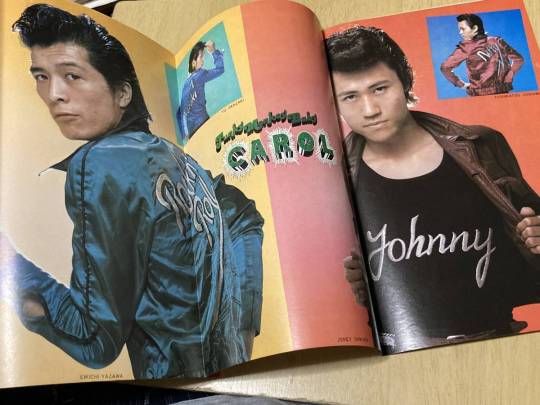
Weekly Playboy was crucial in turning Carol's members into fashion icons and leaders of millions of young men. Above, the 8/21/1970 issue, which opened with a fold-out of the band's most popular members, Eikichi Yazawa and Johnny Okura.
In February 1973, another influential figure, Jin Tatsumura, attended one of these concerts. At the time, Tatsumura, a 33-year-old NHK director from a high-society background, wasn't the band's primary audience, but he found himself captivated by the energy and fervor of the performance. Given his role overseeing NHK's documentary content, Tatsumura left the live show with an overwhelming desire to create a special documentary about the band for the national broadcaster. He believed the culture surrounding Carol perfectly encapsulated a new type of post-war youth movement.
Tatsumura poured his heart and soul into creating the Carol documentary, making it his passion project. By July, he had completed production with plans to broadcast it in prime time at the end of the month. However, to his astonishment, when the day arrived, only a nine-minute edited version of his work was aired. NHK's higher-ups deemed the debauchery and rebellious behavior associated with the band unsuitable for the public network's clean and wholesome image.
This left Tatsumura furious. Not only did he initiate legal proceedings against NHK, but he also decided to release his censored documentary in cinemas. Consequently, the public broadcaster terminated his employment and banned Carol from its airwaves. For a band well aware of the media's promotional power, being banned from the country's most influential network could have been detrimental. However, it only enhanced their status as anti-establishment icons, further fueling their popularity.
While Carol left an indelible mark on fashion and youth culture, their most significant musical legacy was proving once and for all that Japanese rock music could thrive.
Until then, Japanese song composition adhered to a rigid formula, with lyrics expected to resemble Japanese poetry. This meant sticking to a specific syllable count that dictated the song's rhythmic structure, in contrast to the more free-flowing lyrics of Western music. Moreover, many believed that the phonetics and structure of the Japanese language couldn't synchronize with the rhythm of rock.
Yazawa and Okura never wasted any time in that debate. They just went ahead and recorded their rock tunes in Japanese. And the public loved it. No one could dispute that they were rock stars playing rock music, so the debate on the viability of local rock was buried once and for all.
It wasn't just the sound, of course. Carol had to sell an image and lifestyle convincingly to break misconceptions about being genuine rockers. Yazawa's professionalism, panache, and life story – akin to the "American dream" mythology of a working-class young man coming from nowhere and achieving his ultimate dream – helped them achieve this. Still, to become the first commercially successful Japanese rockers, Yazawa and co. had to introduce some stylistic innovations to local music.
Their television debut captured the hearts of the masses as they performed English-language rock classics like "Johnny B. Goode." Since these songs were relatively unknown in Japan, many assumed they were original compositions, especially since one of the band members was also named Johnny. The electrifying segment generated immense excitement, leading the Nippon Phonogram/Phillips label to sign them and launch an aggressive marketing campaign. Starting in December, less than two months after their Fuji TV debut, Carol released singles every month.
Their debut single, "Louisiana," initially featured English lyrics by Johnny Okura. However, at the last minute, the label requested a switch to Japanese, believing it would be more commercially viable. At that point, Okura and Yazawa devised a unique lyric-writing method. Rather than striving for cohesion, they crafted lyrics that freely matched the rhythm, peppering them with sporadic English phrases like "oh yeah" and "oh baby." This unconventional approach struck a chord, as "Louisiana" became a hit, solidifying the presence of Japanese-language rock.
Yazawa also adopted a distinctive singing style called the "rolling tongue" method. This involved singing in Japanese but with an American accent. For example, instead of pronouncing a sentence like "ore no kanojyo" with proper Japanese pronunciation, he rendered it in the style of an American English phrase: "orrei nou kanoujyou."
These innovations were warmly embraced by the public. In particular, with their seventh single, "Funky Monkey Baby," achieved monumental success and became a timeless Japanese rock classic.
At the outset of 1975, despite their tremendous success, the members of Carol found themselves at odds and decided to part ways. Their farewell concert at the Hibiya Open Air Concert Hall drew 7,000 fans, doubling the venue's 3,000-person capacity. Several months later, TBS broadcast the live performance as a special episode of their popular variety show, "Ginza Now!" Staying true to Carol's style, fireworks intended for special effects accidentally ignited due to rain, resulting in the band's illuminated sign burning down and collapsing. This unscripted moment only added to the event's legendary status.
Following the band's breakup, attention turned to the songwriting duo of Okura and Yazawa, often compared to Lennon and McCartney. Although their creative synergy was evident, their clashing personalities ensured they would never reunite.
Okura, with his free-spirited mindset and erratic behavior, including a struggle with drug addiction and the revelation in 1975 that he was a "zainichi" (a Japanese-born Korean, Japan's most prominent ethnic minority, frequently subject to racism and prejudice), couldn't assimilate into Japan's conservative, buttoned-up showbiz scene. In the 1980s, he succeeded as an actor, winning a Japan Academy Award and receiving prestigious offers, including an invitation to participate in NHK's historical drama. However, an incident in 1987, in which he fell from the balcony of his seventh-floor hotel room, derailed his career, pushing him off the mainstream radar and into the underground scene, where perhaps he felt more comfortable. Okura passed away in 2014 at the age of 69.
In contrast, Yazawa embarked on a different path. With his striking good looks, remarkable style, talent, and legendary work ethic, he emerged as one of Japan's most prominent artists, with his solo career overshadowing the success of the band that propelled him to stardom.
Initially, however, his solo career faced significant hurdles.
Ever the consummate professional, Yazawa worked behind the scenes to ensure a seamless transition to a solo career. He signed a contract with Sony/CBS, borrowing funds from the label to extricate himself from his previous Phillips deal. He allocated all his Carol royalties to spend several months on the West Coast of the United States, recording his new album. However, upon returning to Japan to launch his new phase as a solo artist, he struggled to connect with his audience. The public yearned for more of Carol, not a solo Eikichi Yazawa. His concert tickets didn't sell, and his new music failed to resonate.
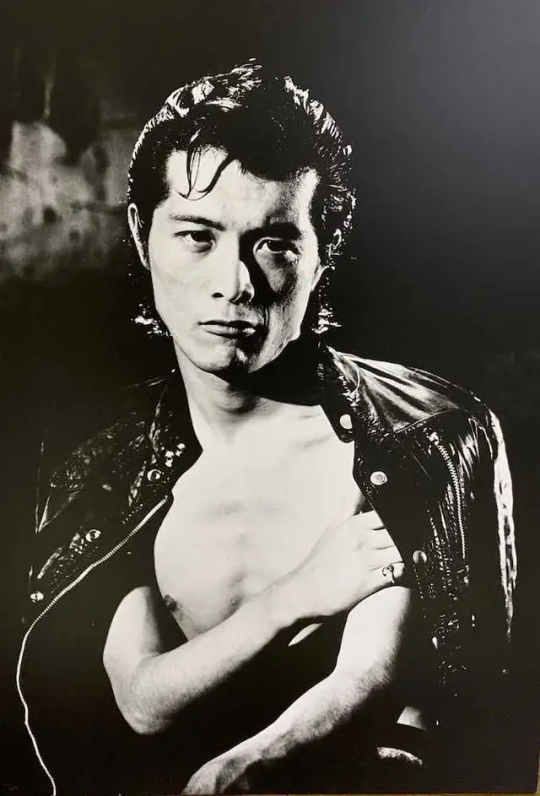
Eikichi Yazawa, from one of the minds behind Carol to a legendary solo act.
Despite the negative chatter, Yazawa remained steadfast in his belief that the public would eventually embrace him as a solo artist with a different, more ballad-oriented rock sound and style. He held live concerts to cultivate loyalty, and his determination paid off. By the end of July 1976, his Hibiya Open Air concert attracted 7,000 attendees, a turnout similar to Carol's farewell show.
The subsequent year saw him embark on an extensive tour, becoming the first local rock soloist to grace the stage at the Budokan. His single "Jikan yo tomare" (Stop Time), featured as the soundtrack for Shiseido cosmetics commercials, became a million-seller. By March 1978, the demand for his live shows had grown so much that he performed at Japan's largest venue, the Korakuen Stadium. In July of the same year, he further solidified his legendary status by releasing his autobiography, "Nariagari," recounting his journey from rags to riches. The book became a cultural phenomenon and a touchstone for an entire generation, surpassing two million copies in sales. It also shaped Yazawa's public image.
By the 1980s, Yazawa had become Japan's highest-paid musician. As the rock genre flourished throughout the decade, he attained universal recognition in the country as the king of rock. From 1983 onwards and continuing into the present, he consistently hosts sold-out nationwide tours.
Despite his immense success, the rock icon encountered personal crisis, most notably in 1998 when a business partner deceived him, siphoning off nearly $30 million in Australian investments by obtaining loans in his name, leaving him burdened with substantial debts. It took him over a decade, but he ultimately managed to repay all the money to the banks. "I can get big loans again," he cheerfully announced in the mid-2000s when he built a five-story studio in a prime location in Akasaka, a central Tokyo neighborhood.

1978 was the year Eikichi Yazawa solidified himself as Japan's top star. In January, he released the million-selling single "Jikan yo tomare," which was used in Shiseido's commercials and became one of his trademark songs (Ryuichi Sakamoto played the keyboard in the song). His fourth and best-selling studio album, "Golden Rush," came out in June, followed, in the next month, by his epoch-making best-selling autobiography, "Narigari," which would ignite a social phenomenon. In August, he became the first rock soloist to perform at the Korakuen Stadium in Tokyo.
Notwithstanding the embezzlement case, Yazawa is known for his business acumen. Since Carol's dissolution, he secured publishing rights for his work and gained control over his merchandise, a rare feat in Japanese show business. In 2008, he took a bold step by establishing his independent recording company to release his work. While numerous Japanese recording artists had previously explored the independent route, notably the folk superstars of the 1970s with their "For Life" venture, Yazawa stood as the singular success story in this endeavor.
With his records still debuting at the top of the charts, Yazawa held a stadium tour in 2022. Alongside Kenji Sawada, he is the only male soloist from the 70s capable of attracting such large crowds. If, in the mid-70s, his band terrorized NHK's higher-ups, the public network celebrated his career's 60th anniversary in 2022 with a series of primetime TV specials.
This is the unparalleled force of rock 'n' roll. Or, at the very least, it is the unprecedented force of Eikiichi Yazawa, the one who first gave the masses a taste of the rock lifestyle.
Trend #11: I Love Rock 'n' Roll
The success of Carol in the early 1970s definitively ended the question of whether Japanese rock could thrive. As the decade drew to a close, major record labels began reaping significant profits from the genre. In 1979, the progressive rock band Godiego emerged as the top-selling act of the year, surpassing idols, enka, and folk stars. However, their ascent to the top of the music charts was not due to any groundbreaking innovation. Instead, they relied on a very effective J-entertainment technique: commercial partnerships and tie-ins.
After signing Godiego in 1977, the Nippon Columbia label did not spare money for the band's promotion. Their debut single served as the soundtrack for Kanebo's cosmetics commercials, and subsequently, all their songs were chosen as themes for various TV shows and movies. However, the actual turning point came when their 7th and 8th single, "Gandhara" and "Monkey Magic," were featured as the closing and opening songs, respectively, for the top-rated NTV historical comic drama "Saiyuki" ("Journey to the West," also known internationally as "Monkey"). Riding on the coattails of the show's success, both songs became massive hits, catapulting Godiego to the forefront of the music scene.
After two years of Pink Lady's hip-thrusting disco idol pop domination, local audiences recognized a rock band at the top of the charts as a refreshing change. Their follow-up single, "Beautiful Name," was used as a UNICEF charity song, giving them another hit. Their fortune continued with the highly coveted opportunity to provide the theme for the animated "Galaxy Express 999" movie, based on Leiji Yamamoto's sci-fi manga.
Five years earlier, a TV anime adaptation of Yamamoto's seminal work, "Spaceship Battle Yamamoto," had been among the first Japanese animated works to achieve immense popularity, captivating children, teenagers, and adults alike. Its success laid the foundation for Japan's burgeoning "otaku" industry. Consequently, expectations ran high in 1979 for the big-screen anime remake of another of Matsumoto's works. By performing the movie's theme song, Godiego was assured of another hit.
By the end of 1979, the progressive rock band had secured the best-selling album and claimed four of that year's 30 top-selling singles.
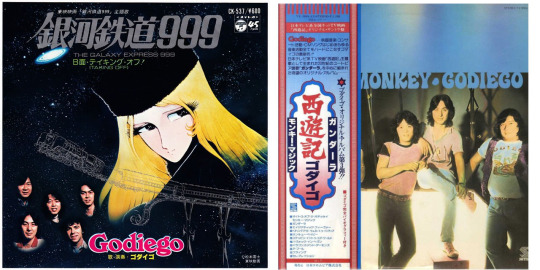
Tie-in with successful TV shows, anime, and UNICEF made the progressive rock band Godiego into the biggest act of 1979.
While good marketing can give you a great year of sales, it doesn't guarantee a prominent position in history books. Achievements based on good tie-ups and marketing are inherently ephemeral, in contrast, for example, to Carol's pivotal role in mainstreaming Japanese-language rock. As expected, the following year saw the local public's attention shift to other trendy acts, causing Godiego to quickly turn into a relic of the past.
But in the year Godiego reigned supreme, a few positions down from them, another band also had a terrific year. With their sophomore album, "10 Numbers Karatto," Southern All Stars had the third top-selling album of 1979. Their single, "Itoshi no Erii" (My Dear Elie), also performed impressively on the singles charts. Although their numbers didn't quite match Godiego's, they would ultimately have the last laugh, establishing themselves as the country's most thriving musical act of all time, with an enduring career spanning five decades. While some would become footnotes in history, Southern All Stars would warrant entire books dedicated to their profound impact on Japanese music.
Before entering history, the five-member band led by Keisuke Kawata was one of Japan's numerous college rock bands, formed at Tokyo's ritzy Aoyama Gakuin University in 1974. They inked a deal with a major label and agency in 1977 after gaining recognition as one of the highlights of the traditional Yamaha Song Contest. In 1978, their first single, "Katte ni Sinbad," whose title referenced hit songs from two of the country's biggest music stars (Kenji Sawada's "Katte ni Shigare" and Pink Lady's "Nagisa no Sinbad"), quickly turned into a hit.
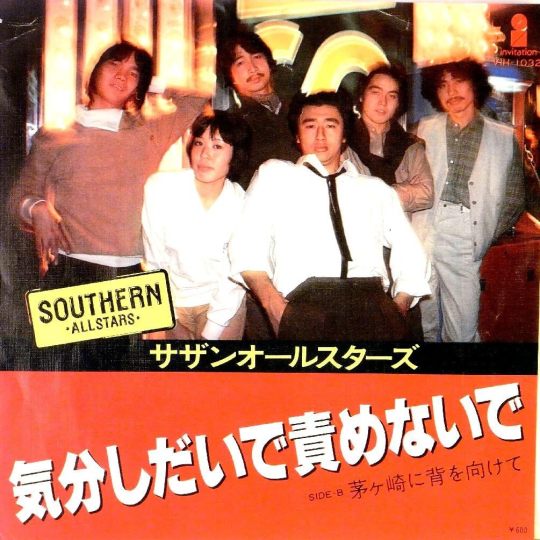
Southern All Stars, seen above on the cover of their second single, "Kibun Shidai de Semenaide."
What set Southern All Stars apart from the outset was their distinctiveness. Initially categorized as "folk," the trendy genre of the era, they were a band from an elite Tokyo university whose sound was infused with exotic foreign influences. Today, their reach and impact are vast enough to be recognized as "J-pop," the most universally appealing contemporary genre. However, akin to Carol, they also played a pivotal role in demonstrating the viability of Japanese rock.
Like Johnny Okura before him, Keisuke Kuwata discarded the rulebook on composition. Lyrics no longer needed to conform to a predetermined syllable count, emulating Japanese poetry; they merely had to synchronize with the rhythm. "Katte ni Sinbad," influenced by Latin music, featured nonsensical lyrics yet emerged as a major hit, marking a watershed moment in local music.
But that was just the beginning for Southern All-Stars. They refused to adhere to a fixed formula. Their lyrics ranged from nonsensical to cohesive, going from traditional to invented words. Their music incorporated samba, reggae, rock, pop, and folk influences. They demonstrated that there was no one-size-fits-all approach for Japanese musicians to follow. The audience eagerly joined them on this musical expedition, pushing the boundaries of what was acceptable in Japanese music.
And with that lesson, the '70s came to a close.
#carol#eikichi yazawa#johnny okura#heibon punch#weekly playboy#j-rock#j rock#70s japan#70s japanese music#godiego#southern all stars#keisuke kuwata#leiji yamamoto
3 notes
·
View notes